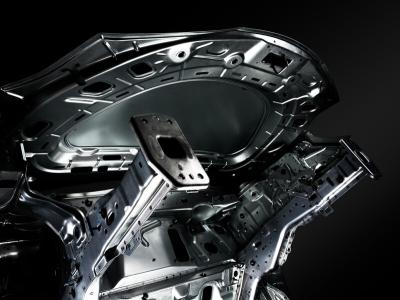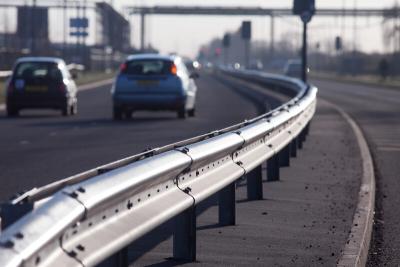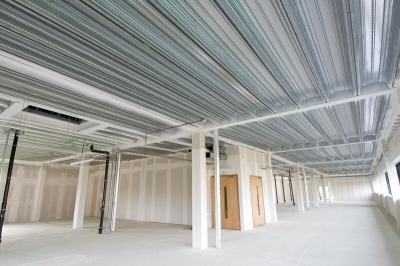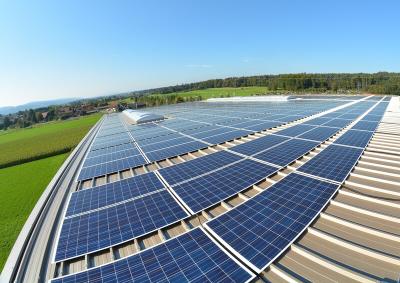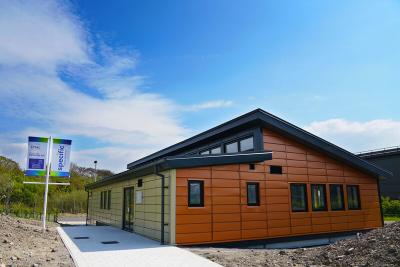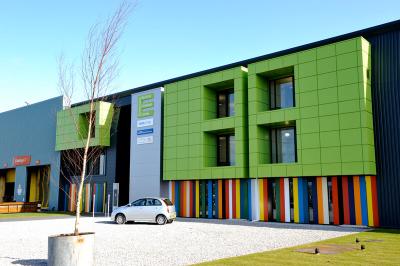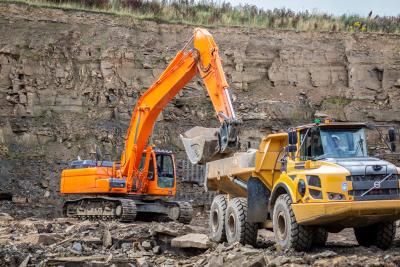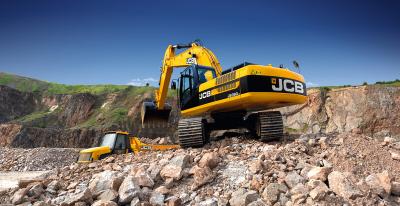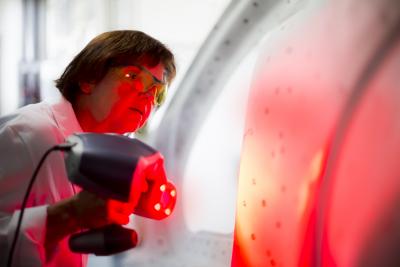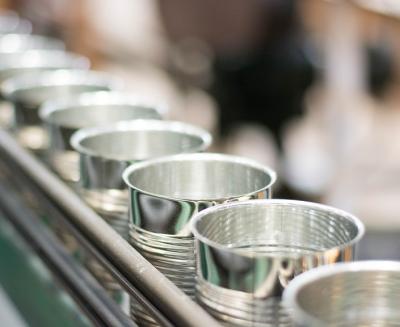Carbon – or more accurately CO2 emissions – is the new currency for the design and construction of structures. In time, mechanisms such as the emissions trading scheme and carbon border adjustment mechanism will ensure that the cost of carbon is factored in to everything we do, but in an attempt to get ahead of the game, many organisations are now setting carbon targets, including those associated with the widely respected Science Based Targets Initiative (SBTI). This feeds down through the supply chain and brings a new metric for the structural engineer – embodied carbon.

Whilst much of the attention in the last 15 years has been on improving the fabric of buildings to reduce energy use in-service and so reduce the full-life carbon footprint, improvements in this area now mean that the focus is shifting to reducing the emissions associated with initial construction. This is termed the embodied carbon.
All construction materials (and everything else) have an environmental impact in their production – both in terms of carbon emissions and other impacts. The embodied carbon of a construction is the sum of all of these, plus the impact of construction itself. Typically, by far the largest impact comes from production of the materials themselves.
The British Constructional Steelwork Association recently published their “2050 decarbonisation roadmap” which sets out 6 levers which will contribute to net zero carbon steelwork by 2050.
Much of the decarbonisation of structural steelwork between now and 2050 will be driven by the adoption of new, low-carbon steelmaking processes. At Tata Steel, we have committed to introducing new technology which will reduce our carbon emissions by 30% by 2030 and to be net zero by 2050. However, these are big investments and will take time to realise.
To achieve improvements in embodied carbon in the short term, the most significant lever is that of design efficiency. The good news is that this is bread-and-butter for design engineers. The bad news is that design efficiency is nothing new, so where are further improvements going to come from? That is where innovations from material suppliers like ourselves can help.
In many cases, the load that a structural member can take is directly proportional to the yield strength of the material used. The steel industry has developed increasingly strong steels, used extensively, for example, in advanced automotive design, to ensure the best strength-to-weight ratio. While automotive designers can choose from a wide array of materials, the choice in construction is more limited, partly due to the use of codes and standards to inform design – and ensure the safety of structures.
When it comes to using structural hollow sections, our latest, S460 strength Celsius® tubes provide excellent opportunities to reduce the steel used in structures, with associated reductions in embodied carbon. Where yield strength is important, the use of S460, compared to the more usual S355 strength, always enables at least a 20% reduction in steel weight and in carbon emissions.
Celsius® S460NH design examples to EN1993-1-1
To demonstrate some of the opportunities afforded to engineers from the use of Celsius® in S460NH strength, we have just published a new, in-depth and detailed design guide.
This guide demonstrates, through fundamental design calculations using EN1993-1-1, some typical applications of Celsius® in S460NH grade and in each case makes the comparison to the equivalent in both S420 and S355.
The typical use-cases explained in this guide are:
1. Tension Member
2. Simply Supported Column
3. Combined Compression & Bi-Axial Bending Column
4. Simply Supported, Laterally Restrained Beam
The chart below demonstrates the material savings which could be achieved by using the S460NH grade in each of those cases:
This design guide helps to show how the use of S460 grade steel can reduce weight of steel in structures. And as carbon emissions are the new currency for steel design, this can be directly translated into embodied carbon savings. A saving of between 20% and 34% in steel-weight can be directly translated into a saving in embodied carbon of between 20% and 34% too.
Celsius® design app update
To better reflect this and help engineers and designers to understand the true impact of design choices, we have now included specific carbon emissions data in our Celsius® design app.
The Celsius® design app provides a quick and intuitive tool for selecting the right section for a particular load case. Users can select either axial or bending resistance, enter the required load and span/buckling length and see the range of section sizes within the Celsius® range which meet their requirements.
In the latest update of the Celsius® design app, the embodied CO2 emissions associated with each section size is given alongside other details such as mass and utilisation factors. Furthermore, results are ordered, by default, to give the result with the lowest carbon emissions first.
Results in the app can be filtered by grade, but by seeing results for different grades together, it is very easy to see how choosing higher grade steel can reduce embodied carbon.
The app returns two figures for CO2 emissions, both in units of kg (CO2 equivalent) per metre of section. The two figures relate to what are referred to in life cycle environmental assessments (LCA’s) as Module A and Module D emissions.
Emissions and embodied carbon
Module A emissions are sometimes referred to as “Cradle-to-gate” emissions, in other words the emissions associated with the manufacture, all the way from extraction of raw materials, to the point where a product leaves the factory gates. Module D are the emissions associated with the product after the end of its first useful life. In the case of steel, studies have shown that over 99% of steel used in construction is recovered from demolished buildings and reused or recycled, so the figure for Module D is negative because this is avoiding the creation of new steel in the future.
For an understanding of the true life-cycle impact of using steel, such as one of our range of Celsius® hot finished hollow sections, Modules A and D must be added together, but many assessments call for only the Module A figures, so this is why both are given separately in the Celsius® Design App.
Whilst Environmental Product Declarations (EPD’s) providing data on embodied carbon are available for an increasing array of structural products, the inclusion of specific CO2 emissions figures in the Celsius® design app is the first time this has been provided at such a granular level. This new feature in the app makes the direct comparison of emissions within the range of structural hollow sections a simple task. Moreover, for the engineer designing using hollow sections, this allows a very simple quantification of the carbon emissions saved through choosing the most efficient design for a particular application. Efficiency in design can be gained through grade choice, for example using the efficient, high strength S460NH grade or through more conventional means by choosing the most efficient section size, but in either case the embodied carbon emissions associated with that choice are clear.
At Tata Steel, we pride ourselves on integrity and transparency. Going beyond EPDs to provide specific carbon emissions data and providing the fundamental calculations to show how our latest, high strength products can be used in real-life situations are two examples of this which will surely help structural engineers to design not only efficient, but carbon-efficient structures.
You can download the Celsius® S460NH design guide here:
And to download the app for either your Apple or Android device, follow the link here:












